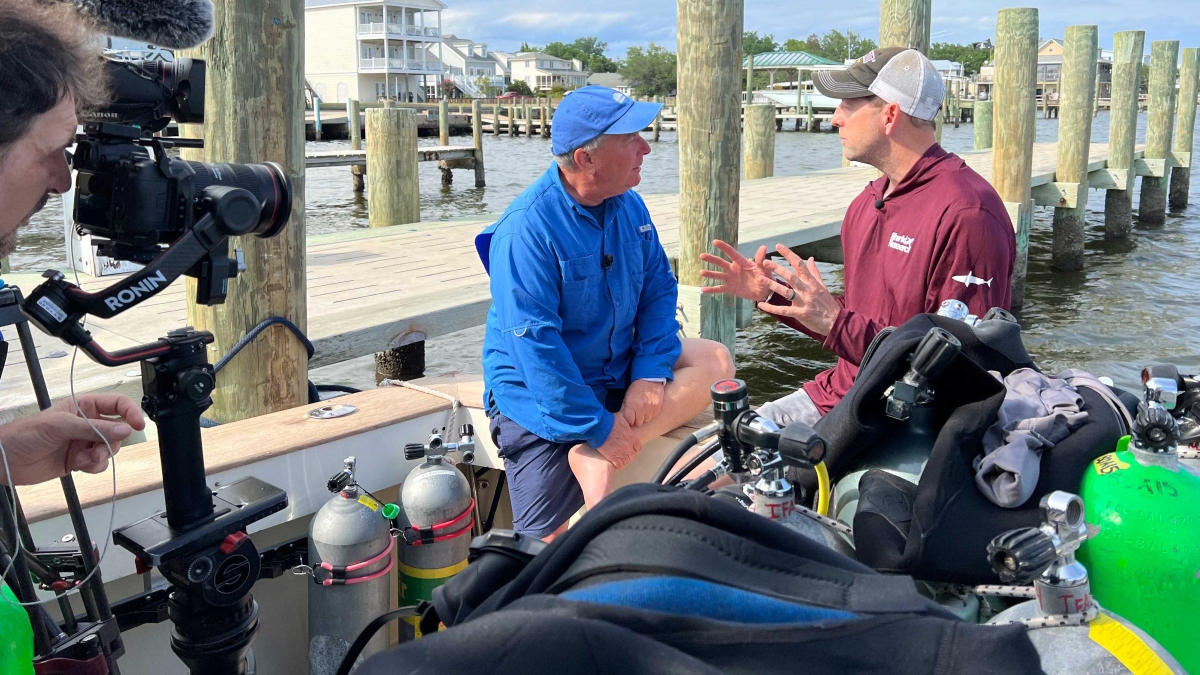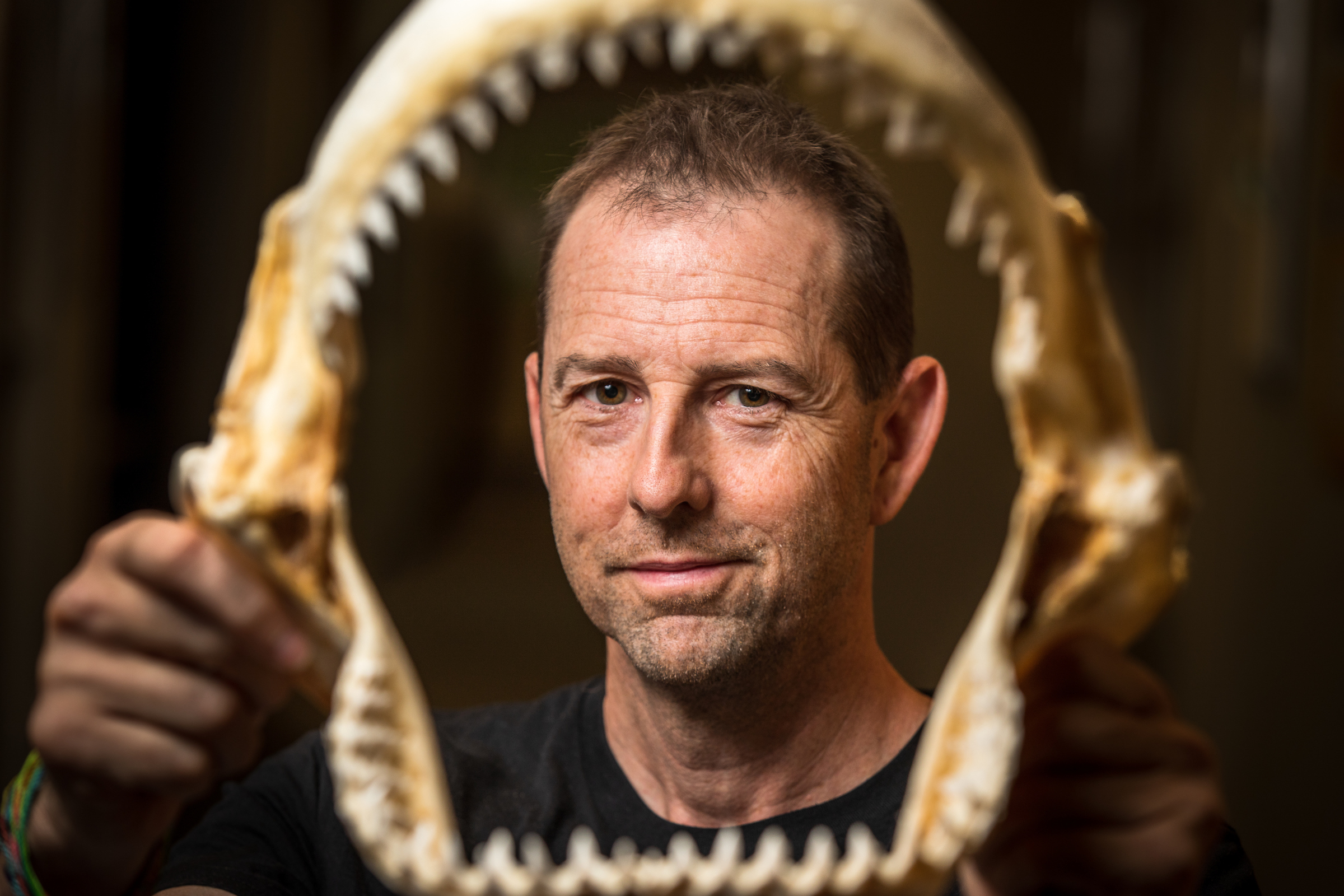If you’re a fan of sharks and you turn on your television this month, there’s a good chance you’ll see Arizona State University Professor James Sulikowski.
Sulikowski oversees the Sulikowski Shark and Fish Conservation Lab at ASU’s New College of Interdisciplinary Arts and Sciences, and his research will be featured on multiple shows in July.
There’s the "Today Show" on NBC, in which he’ll highlight his work on a pregnant sand tiger shark, running the week of July 18.
Then he's part of National Geographic's SharkFest event, with his research on porbeagle shark babies featured in a documentary called "Baby Sharks," which can be streamed on Disney+ or viewed live on Disney XD on July 24 and National Geographic Wild on Aug. 7.
He's in two episodes of SharkFest's "Shark Attack Files," debunking information about sharks, which premieres July 18 on National Geographic, runs Aug. 7 on National Geographic Wild and can be streamed on Disney+.
And he's also in a Discovery Channel show called “Haunting of Shark Tower,” as part of Shark Week, airing as a Discovery+ exclusive on July 15.
“It’s a terrible name,” said Sulikowski, an internationally recognized marine biologist.
James Sulikowski poses with the jaw of a bull shark in his lab. Photo by Charlie Leight/ASU News
ASU News talked to Sulikowski about his work, what fans can expect to see on the shows and why the 1975 film "Jaws" still gives sharks a bad name.
Editor's note: The following interview has been edited for length and clarity.
Question: Let’s start with the National Geographic shows. What will the focus be on?
Answer: One of them is called “Baby Sharks,” and it’s our work we conducted on the porbeagle shark, which is like a cross between a mako and great white shark. The porbeagle species hasn’t really been focused on, especially the babies. So it’s about their movement, their habitat, where they live… Not much is known about them.
Q: Where is the porbeagle shark located and what makes it unique?
A: They’re a cold-water shark, and that’s what makes them unique. They’re able to regulate their body temperatures in cold water so they don’t need to migrate south like most other sharks. So our research with that species focuses in New England, and we’ve been studying this animal for three or four years.
Q: Why the focus on the baby sharks of the species?
A: There’s two really important life history stages for sharks if you want to conserve and manage them. The pregnant moms, protecting their habitat. Where do they go? Where do they spend their time? And how is that affected by climate change or fishing? And the babies. They need to grow up in a safe place and have the environment they need. We’re interested in where these particular sharks give birth because the timing of their birth seems to coincide with commercial tuna fishing, and they’re getting caught within that fishery. We want to figure out how everybody can kind of coexist.
Q: Your other show on National Geographic is about debunking the misinformation about sharks, right?
A: Right. Dismissing the fear of these sharks being blood thirsty animals. So it’s sort of like a kind of "MythBusters" for sharks.
Q: Is the perception of sharks still colored by "Jaws"?
A: Absolutely. One hundred percent. What they did to sharks is almost criminal. One of the sharks we tagged is a 12-foot great white, and the tag gives its real-time position. So this shark we tracked has moved from North Carolina up the cape and now it’s in Maine, and everybody’s freaking out. It’s insane. Sharks are definitely a polarizing animal, and most people are terrified of them. "Jaws" had a huge impact.
Q: How many shark attacks are there a year?
A: Globally, you’re talking 100, maybe 150 bites per year. And less than 10 are typically fatal.
Q: Why do you think there’s still this visceral fear of sharks when attacks are so infrequent?
A: It’s the fear of the unknown. People will never get over the fear of the unknown. Go to Lake Pleasant and I’m sure half the people there think some shark is going to attack them. The reality is, there are so many other things that are much more dangerous in the water than sharks. It’s just that whenever there’s a bite, the media jumps all over it. Could you imagine that same sort of reaction every time a person was stung by a rattlesnake? You have way more chance of that happening depending on where you live. Sharks have just been vilified.
Q: What is the episode on the "Today Show" about?
A: We caught a sand tiger shark that was pregnant, and we put an experimental tag inside of it that revealed some really cool data that kind of goes against what traditional scientists have thought. What we think we’re onto is that these sharks might be giving birth in areas where they can protect their babies from larger individuals that are around them and might want to eat them. It’s something that really hasn’t been talked about or discussed in the literature.
Q: Tell me about the “Haunting of Shark Tower” on the Discovery Channel.
A: It’s all about these great white sharks in North Carolina and how they’re impacting the local ecosystem. It’s a huge predator. They bring us in as the research team to catch the sharks. So it’s kind of set up like that. It’s pretty epic. I mean, we catch a 12-foot white shark.
Q: I have to say: That’s pretty cool work.
A: We’re in a desert and we’re doing shark research. (People) want to know how is this possible, you’re in the middle of the desert, right? How do you get on the "Today Show," or Shark Week and these high-profile media exposure things consistently? You’re a fish out of water. It’s a great story because it goes back to ASU being No. 1 in innovation. And if you have a great support team, then anything is possible.
Top photo: James Sulikowski (right) speaks with Kerry Sanders about his work on a pregnant sand tiger shark for the "Today Show."
More Science and technology

ASU professor breeds new tomato variety, the 'Desert Dew'
In an era defined by climate volatility and resource scarcity, researchers are developing crops that can survive — and thrive — under pressure.One such innovation is the newly released tomato variety…

Science meets play: ASU researcher makes developmental science hands-on for families
On a Friday morning at the Edna Vihel Arts Center in Tempe, toddlers dip paint brushes into bright colors, decorating paper fish. Nearby, children chase bubbles and move to music, while…

ASU water polo player defends the goal — and our data
Marie Rudasics is the last line of defense.Six players advance across the pool with a single objective in mind: making sure that yellow hydrogrip ball finds its way into the net. Rudasics, goalkeeper…



